USA Cycling announces results of revamped amateur anti-doping program, with five rule violations
The 'RaceClean' amateur racer testing program was revamped for 2016 after starting in 2013
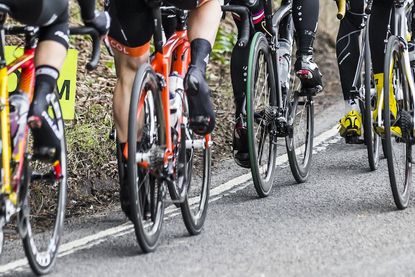
Originally launched in 2013, the 2016 season saw USA Cycling revamp its testing of amateur athletes through its anti-doping, RaceClean initiative, announcing that it found five anti-doping violations out of 185 tests.
Membership fees for domestic racers did not increase, but a one-time $5 RaceClean anti-doping surcharge was added to category 1 mountain bike, category 2 and 3 cyclocross, road and track licenses as well as $25 for category 1 road, track and cyclocross racers.
>>> 55-year-old British amateur cyclist banned after failed dope test
UCI pro road licenses also had a one-time fee of $50 to help fund the program.
The main objectives of the testing distribution was to attempt to proportionally spend money on the groups that paid the RaceClean one-time fees. USA Cycling hoped for the testing to accurately reflect the funding distribution by geography, gender, racing discipline and category.
In total, 185 amateur athletes were tested according to the year end report recently released at a cost of $134,700. In comparison, only 45 amateur tests were conducted in 2015, a 400 percent increase in 2016.
Women represented 21 percent and men 79 percent of the total pool tested. Within the male racers, 41 per cent of those tested were masters (35 years or older) athletes, while only 18 per cent were category 1 or 2 racers.
Get The Leadout Newsletter
The latest race content, interviews, features, reviews and expert buying guides, direct to your inbox!
Category 1 and 2 racers are most likely to move into the professional ranks.
The majority of testing occurred at road cycling events, nearly 65 per cent, with no testing completed at mountain bike or track events and approximately 35 per cent at cyclocross races.
However, the Cycling Anti-Doping Foundation ran tests at national calendar events like the Pro XCT mountain bike races, so athletes at these events didn’t go untested per say, but USA Cycling did not conduct the tests themselves.
Geographically speaking, racers from 34 states were tested at 20 different states across the country.
Only five anti-doping rules violations were announced from the 2016 program, with the possibility of additional sanctions being announced after due process occurs.
Final numbers from the 2016 positive tests are anticipated to be released in mid to late 2017.
Read the full year-end report here.

Thank you for reading 20 articles this month* Join now for unlimited access
Enjoy your first month for just £1 / $1 / €1
*Read 5 free articles per month without a subscription

Join now for unlimited access
Try first month for just £1 / $1 / €1
-
 Tweets of the week: Brutal weather at Flèche, an idiot sandwich and is there a new POC helmet?
Tweets of the week: Brutal weather at Flèche, an idiot sandwich and is there a new POC helmet?There's a lot of love for Kasia Niewiadoma, and it turns out Norwegians are good in bad weather
By Adam Becket Published
-
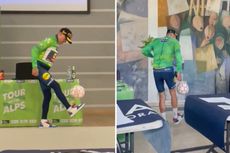 Juanpe López wins Tour of the Alps, does 34 kick-ups with a football
Juanpe López wins Tour of the Alps, does 34 kick-ups with a football'My coach said to do it for Betis,' says Spaniard of his boyhood football club
By Tom Davidson Published
-
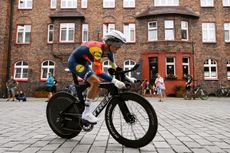 Steroids found in pro cyclist’s anti-doping test sample
Steroids found in pro cyclist’s anti-doping test sampleAntwan Tolhoek has been provisionally suspended by the UCI while proceedings are ongoing
By Tom Davidson Last updated
-
 Jonas Vingegaard reveals he missed an anti-doping test
Jonas Vingegaard reveals he missed an anti-doping test'It's not great to have a missed test hanging over you,' says Tour de France champion
By Tom Davidson Published
-
 Jumbo-Visma rider Michel Hessmann suspended after positive anti-doping test
Jumbo-Visma rider Michel Hessmann suspended after positive anti-doping testThe 22-year-old's out-of-competition sample detected the presence of diuretics
By Tom Davidson Published
-
 Former British Cycling doctor Richard Freeman given four-year doping ban
Former British Cycling doctor Richard Freeman given four-year doping banFreeman chose not to defend himself before the anti-doping panel
By Tom Davidson Published
-
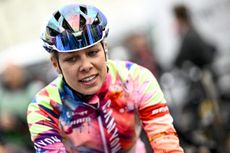 'We are not cheaters' says Belgian rider Shari Bossuyt after anti-doping positive
'We are not cheaters' says Belgian rider Shari Bossuyt after anti-doping positiveThe Canyon-SRAM rider tested positive for Letrozole in an anti-doping control in March
By Tom Davidson Published
-
 "Failing that drug test was the best thing that had ever happened to me"
"Failing that drug test was the best thing that had ever happened to me"Abuse victim and disgraced cycling champion Geneviève Jeanson finds solace in return to bike racing
By Anne-Marije Rook Published
-
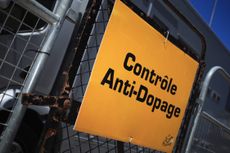 29 cases of alleged doping recorded in cycling in 2022, but only one at WorldTour
29 cases of alleged doping recorded in cycling in 2022, but only one at WorldTourMost came from semi-professional ranks, MPCC finds
By Tom Davidson Published
-
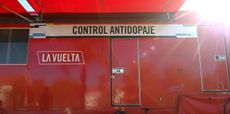 Spanish police crack down on doping ring, former Kelme coach questioned
Spanish police crack down on doping ring, former Kelme coach questionedMiguel Ángel López denies any involvement in statement
By Adam Becket Last updated